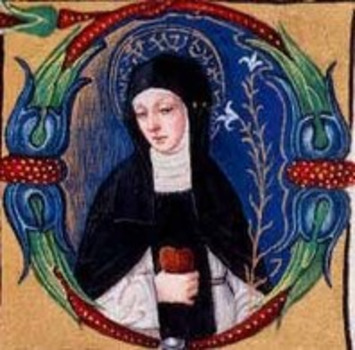Blessed Angela of Foligno (1248 – 1309), a Franciscan tertiary, and Saint Catherine of Siena (1347 – 1380), a Dominican tertiary. They were Catholic holy women from medieval Italy.
These two women had mystical visions and practiced extreme mortification. While such behaviors may seem strange and somewhat detrimental to the modern feminist scholar, we must examine these behaviors from the context of the time period of Angela and Catherine. This paper will attempt to contextualize the actions and texts of both women, to show that though they appear on the surface to be the submissive ‘lambs’ of the Church which today’s feminists vilify, underneath the ‘lamb’s clothing’ of orthodoxy they are more akin to the ‘wolves’ contemporary feminists are seeking for inspiration. Angela and Catherine submitted to the Church by practicing imitatio Christi, becoming part of official orders as tertiaries and revealing their actions and visions to confessors.
In their behavior and writings, both women supported the ideals of the Church. This conformity allowed Angela and Catherine to avoid charges of heresy and to carve out a space for themselves within the Catholic Church. However, both women threatened to cross the line into heterodoxy with their critiques of the Church and the extreme degree to which they took their asceticism. In addition to their sanctity amongst the laity, both women were able to usurp some of the Church’s spiritual authority through their actions and texts. Thus, though both women wore the ‘lamb’s clothing’ of conformity, they were ‘wolves’ underneath.



 Your new post is loading...
Your new post is loading...

























Article has link to PDF of full paper.